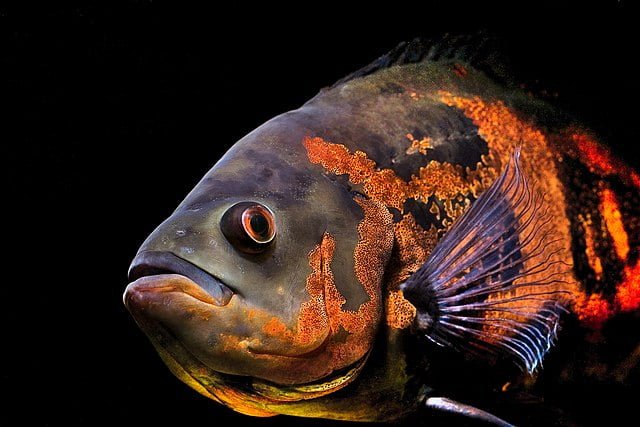
By-products from fruit processing retain nutritional and functional components, making them suitable for animal feed. However, the effects of using fruit by-products as additives in fish feed require thorough evaluation.
A team of researchers from São Paulo State University (Unesp) and Complutense University of Madrid assessed the effects of fruit processing by-products on biochemical and oxidative parameters in tilapia blood, as well as the composition and lipid peroxidation of fillets.
The researchers prepared four diets for the tilapia: a control diet (without fruit), and three diets containing 5% acerola (Malpighia emarginata, ACM), apple (Malus domestica, APM), or grape (Vitis vinifera, GRM) flour.
Utilizing Fruit By-Products
Using fruit by-products to replace key components in fish diets can enhance food security, reduce environmental impact, and animal feed costs.
Furthermore, fruit by-products improve animal health due to the presence of bioactive compounds with antioxidant, anti-inflammatory, antimicrobial, hypoglycemic, and immunostimulatory properties, such as phenolic compounds and carotenoids.
The use of by-products aligns with circular economy principles, including reducing food system waste, reusing food, utilizing by-products, food waste, and nutrient recycling.
Growth Performance
According to the study results, tilapia fed with grape flour by-products had the highest concentrations of total phenolic compounds and carotenoids, as well as the best antioxidant capacity.
Moreover, the researchers found that except for the greater weight gain observed in tilapia fed with acerola flour, fruit by-products did not significantly influence the animals’ growth performance.
Stay Always Informed
Join our communities to instantly receive the most important news, reports, and analysis from the aquaculture industry.
In this regard, scientists suggest that the concentration of fruit flours and/or feeding time might not have been sufficient to reveal these expected improvements.
Biochemical Parameters
Biochemical parameters are also used as biomarkers for animal health and well-being.
“Inclusion of fruit flours in tilapia diets did not significantly affect the total protein concentration (albumin + globulin) and albumin levels in the blood, suggesting fish condition,” they reported.
Various studies have indicated that albumin constitutes between 35 to 50% of total blood proteins and plays important roles in muscle metabolism and the immune system.
Proximate Composition of Tilapia Fillets
According to the study, the composition of tilapia fillets fed with fruit by-products displayed higher lipid and protein contents.
The study highlights that lipid concentration increased in tilapia fillets fed with fruit by-products, while protein concentration increased in the fillets of tilapia fed with grape by-products.
According to the researchers, “Control of oxidative stress promoted by phenolic compounds and carotenoids in the diet can also be identified by the lower carbohydrate content found in fish fillets fed with fruit by-products, indicating a reduced need for glycogen accumulation as an energy resource to cope with stressful situations.”
“The antioxidant compounds in diets containing fruit by-products decreased lipid peroxidation and reduced TBARS concentrations in frozen tilapia fillets at all analyzed times. At 60 days of frozen storage, TBARS concentration in the control group was more than twice the concentrations found in the groups that received diets containing fruit by-products,” they emphasized.
Conclusion
The study’s results underscore the promising prospects of utilizing fruit by-products in tilapia aquaculture. However, the study authors note that the results might be more evident with longer feeding times or higher levels of fruit flours, particularly in terms of growth performance.
“Acerola, apple, and grape by-products had high concentrations of phenolic compounds and carotenoids and high in vitro antioxidant activity. Their inclusion in tilapia diets did not affect productive parameters, maintained or improved fish health and oxidative status, and improved fillet composition and lipid stability,” the researchers conclude.
They recommend the inclusion of fruit by-products in farmed tilapia diets due to their proven beneficial effects on animal health and product quality.
The study was funded by the Brazilian Federal Agency for Support and Evaluation of Graduate Education (CAPES), as part of the CAPES-PrInt Program.
Reference (open access)
Chotolli, A.P.; da Fonseca, V.E.; Bermejo-Poza, R.; Ferraz, I.G.; de Souza, L.C.C.; Brasil, M.L.; Santana, R.F.; Games, I.M.M.; Ferraz, M.C.; Theophilo, G.; et al. Dietary Fruit By-Products Improve the Physiological Status of Nile Tilapias (Oreochromis niloticus) and the Quality of Their Meat. Antioxidants 2023, 12, 1607. https://doi.org/10.3390/antiox12081607
Editor at the digital magazine AquaHoy. He holds a degree in Aquaculture Biology from the National University of Santa (UNS) and a Master’s degree in Science and Innovation Management from the Polytechnic University of Valencia, with postgraduate diplomas in Business Innovation and Innovation Management. He possesses extensive experience in the aquaculture and fisheries sector, having led the Fisheries Innovation Unit of the National Program for Innovation in Fisheries and Aquaculture (PNIPA). He has served as a senior consultant in technology watch, an innovation project formulator and advisor, and a lecturer at UNS. He is a member of the Peruvian College of Biologists and was recognized by the World Aquaculture Society (WAS) in 2016 for his contribution to aquaculture.




